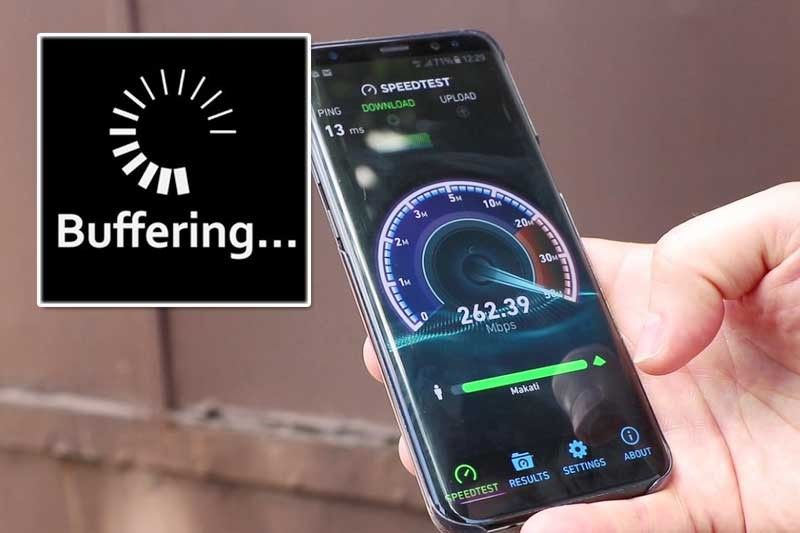Buffering takes fun out of video watching

MANILA, Philippines — Watching online video streaming is an exciting experience.
But the excitement quickly turns into frustration when the image feed is replaced by an unsightly arc interminably going around in circles. The arc disappears when the images return, reappears anew, disappears again when the playback resumes, then appears again, and the cycle goes on and on.
This cycle (technically called buffering) occurs when the system reloads, and repeatedly goes on-off until the viewer turns off his cellphone or tablet altogether…end of the online video experience.
Buffering (reloading if you may) is a bane for online video viewers and an unmistakable sign of slow mobile connectivity. In the bigger picture, efficient communication systems are as much a necessity as speedy transportation facilities that global capitalists look for in any country they have set their eyes on as an investment destination.
For instance, teleconferencing which transcends time and space, has become an integral part of big businesses worldwide. But this phenomenon cannot take place with zero or poor digital connectivity.
It is in this environment that mobile analytics companies were born. These entities specialize in determining the strength of online video streaming in every country, region by region.
Among these industry analysts is OpenSignal which recently conducted a survey of video experience in the Philippines involving industry leaders Smart Communications and Globe Telecom.
On a scale of 0 to 100, OpenSignal, using real-time measurements, rated the average overall video experience of Smart subscribers at 42.21, at par with American carriers AT&T and Sprint. Globe subscribers were rated at 29.22 points, a difference of almost 13 points.
Experts said the quality of video experience is an important metric because it is the true test of network power. Among the details OpenSignal analyzes in order to determine a telecom carrier’s overall performance are download and upload speeds, latency and availability on both 3G and 4G spectrums.
The report for the months of May to July showed Smart LTE download speeds ahead nationwide at 13.09 Mbps (vs Globe’s 7.34 Mbps), as well as across all measured areas: at 15.24 Mbps in National Capital Region (vs. 8.43 Mbps); 13.48 Mbps in North Central Luzon (vs. 6.02 Mbps); 10.59 Mbps in South Luzon (vs 6.47 Mbps); 10.49 Mbps in the Visayas (vs 7.42 Mbps); and 12.23 Mbps in Mindanao (vs 6.95 Mbps). Smart also has lower 3G and 4G latency at 98.28ms and 53.48ms, respectively.
Earlier this year, OpenSignal also awarded Smart for having the fastest LTE network, and gave it four citations: Best in 4G LTE download speed; Best in overall download speed; Best 4G latency performance; and Best 3G latency performance.
These numbers matter because Filipinos are the most avid video consumers of the world, as shown by a separate study done by Limelight Networks in August. Not only are more Filipinos viewing videos on their mobile phones, viewers in the Philippines spend about eight hours and 46 minutes each week on streaming videos.
This exceeds the global average and beats the record for India and the U.S. where people watch close to eight hours and 30 minutes of videos online. It also marks a shift in the viewing habits of Filipinos—at this level, they are spending more time watching streaming videos on smartphones than TV broadcasts, especially among the population under 46 years old.
Another notable trend is that professionally produced content on social media sites and user-generated content attract the most viewers in the Philippines than in any other country included in the Limelight Networks study. In fact, Smart has noted an almost 400 percent increase in the number of YouTube users and a whopping 850 percent surge in the volume of YouTube traffic between April and October this year. The period coincides with a promo that allowed free YouTube viewing for an hour daily with the purchase of various mobile data packages.
With so many eyes now riveted to online content, quality expectations are on the rise globally. Video buffering, or when the video pauses during playback in order to reload, is becoming unacceptable. The study has noted that for 2018, almost 70 percent of viewers will stop watching a video after a second buffering, or 2.2 times. Just two years ago, the global tolerance level for video buffering stood at 2.7 times, or almost three times of buffering before viewers skip the online video viewing.
Obviously, video buffering isn’t a problem among Smart subscribers with the telco’s technical qualifications. Can we say the same for Globe subscribers? Sadly, the numbers show otherwise, to the detriment not only of its subscribers but of the entire country as well.
- Latest





























